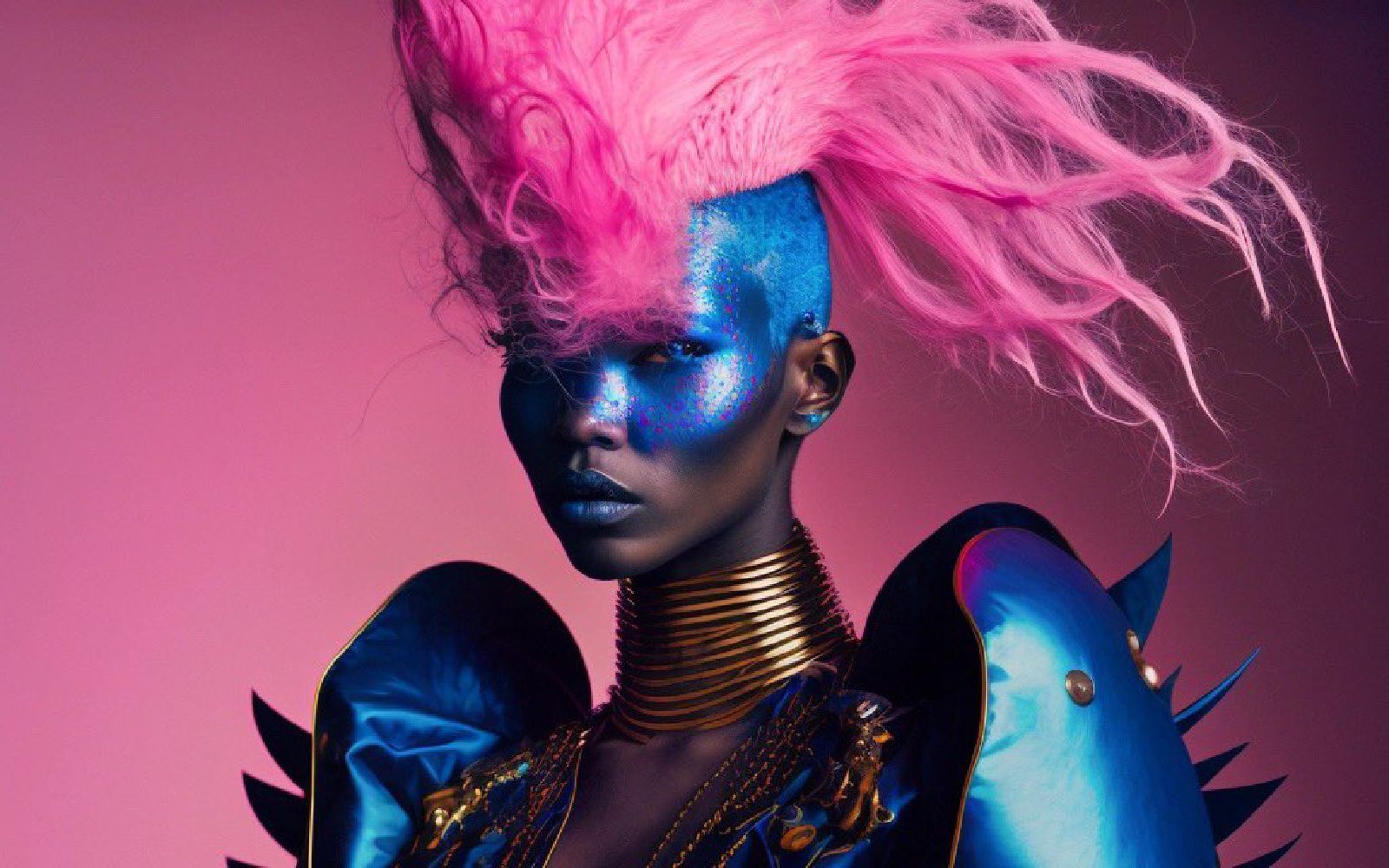Should Fashion Embrace AI Technology?
The success of integrating AI and fashion on Twitter predicts the emergence of a new technology in the industry, or maybe not.

Over the past few months, AI-generated technology has become increasingly popular as social media platforms have recently discovered its endless possibilities. From AI-generated portrait photos to ChatGPT, to Artistic Image Generators and AI-generated images, many programs in this category are gradually dominating the market. In the fashion industry, recent broader explorations into this field have begun to develop at an exponential rate. The global AI market in the fashion industry was reported at $270 million in 2018 and is expected to rise to $4.4 billion by 2027.
In recent weeks, more than ever, we have seen a plethora of AI-generated technology on our daily feeds. This includes a range of AI-generated fashion opinion pieces, AI-generated fashion trends, and most notably among them, all AI-generated fashion collaborations.
Not long ago, one of the most convincing imagined collaborations to appear on the internet was the partnership between Simone Rocha x Nike AI created by the @ai_clothingdaily page, which became extremely viral, not just because this was a potential real-life collaboration, but also because the shoes created were genuinely impressive. The post garnered hundreds of shares, with some not reading the fine print even asking where they could purchase the shoes.
Another recent case in point is the unveiling of the Tiffany&Co collaboration with Nike shoes. Prior to its release, a wave of AI artists on Twitter created and imagined how these highly anticipated shoes would look. The results generated were all sorts of interesting and ambitious versions of the Nike Air Force 1, including Tiffany Blue athletic shoes made from leather, suede, patent, and various other materials. The digital renditions elevated the shoes to such a degree that when the actual product was released—a simple black suede athletic shoe with a Tiffany blue accent—the public’s response was nothing short of a major disappointment.
These two instances (Simone Rocha x Nike and Tiffany&Co x Nike) may differ in detail but raise similar questions: Can AI-generated imagery create unrealistic expectations for consumers? Should designers turn to AI for inspiration? And what are the ethical implications for designers seeking inspiration or collaborating with artificial intelligence?
The fashion industry’s interest in new modern technology stems from its truly infinite potential, and there are some arguments to support this view. For instance, the fact that anyone can create AI Art, which will make art more accessible to more people, means that one doesn’t need an art or fashion degree to become a designer. AI-generated tools are also said to encourage humans to be more creative, and in cases where there are no existing examples or visual references, it can be used to visualize what’s in a designer’s mind, helping them efficiently go through the design process. Contrary to popular belief, AI programs in existence today also pose no reasonable threat to replacing human labor.
WWD recently debunked this theory and cited a study from Pusan National University, where researchers found that between human-designed and AI-designed fashion, the biggest difference is uniqueness. And this uniqueness is seen in human designs, coming from human experiences.
With all the considered advantages, it seems like AI technology could get the fashion industry’s green light right away. However, looking at the bigger picture, it’s hard to ignore the concerns that come with it. The debate against AI in fashion is also intriguing, as it raises questions about copyright, authenticity, and originality.
Although fashion is an ever-evolving industry, it’s also rooted in tradition. Stories like Issey Miyake crafting his first bodysuit or Alexander McQueen creating some of his greatest collections inspired by ordinary people doing everyday jobs are among the industry’s greatest treasures. There’s a tremendous value around uniqueness, originality, and around having the ability and skill to create an entire world from scratch. AI technology represents something contrary to this, being seen by many as a shortcut to creativity. This forces us to reflect: will the rise and existence of AI technology in fashion diminish the value of traditional design methods?
We should examine and compare the actual and hypothetical facts of two different designers: one who hired an AI expert, whom they sent a few keywords and received AI-generated images, then used them to create an actual fashion collection; while the other spent weeks or even months gathering inspiration, which they would interpret into sketches, then put into production. One could argue that the second collection holds more value because of the amount of labor put into it. So should these two designers be viewed at the same level or not?
Artificial intelligence is an inevitable part of fashion’s future, so we’ll need to learn to live with it. This may mean finding solutions like encouraging designers to use traditional methods gently, or requiring designers who use AI to disclose this (the use of AI in design) before releasing a product. All with the aim of seeking balance, to respect the work of traditional artisans while being open to embrace the new frontiers of technology.

